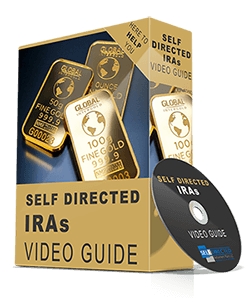If you want to increase your safely and steadily, 401(k) dividends can be a great investment tool for you! However, are you aware of the concept of dividends? Do you know how they work in your strategy, and how they integrate into retirement plans like 401(k)? It’s ok if you don’t, this blog will answer those questions and more regardless of your financial expertise.
Let’s explore the world of dividends, with a special emphasis on dividends from 401(k) plans, investing methods, and ways to optimize their potential. Let’s get started!
A Dividend: What is It?
Corporations distribute a portion of their profits to shareholders in the form of cash or more shares through dividend payments. The dividend rate, the amount paid per share, is usually announced on a quarterly basis. It is subject to change depending on the financial health and performance of the business.
What is a Dividend Investment?
Buying and keeping stocks that pay dividends on a regular basis is the main goal of a dividend investment strategy. The goal of this technique is to give investors a steady flow of income, especially when the market is volatile.
Known as Dividend Aristocrats, investors frequently look for businesses that have a track record of steadily raising dividends over time.
What is a 401(k) Dividend?
Employers can help their employees save for retirement by offering defined-contribution retirement plans like 401(k). A lot of 401(k) plans invest in businesses that offer dividends. Over time, a 401(k) dividend can greatly increase retirement savings because of compound interest. These dividends have the potential to significantly increase your entire retirement account if they are handled well.
How Do 401(k) Dividends Work?
When it comes to 401(k) payouts, knowing how these investments work within the framework of a retirement plan is crucial. Let’s dissect it even more:
-
Investments That Pay Dividends
Your 401(k) may contain a range of assets in businesses that pay dividends on a regular basis. Give preference to stocks or ETFs with a track record of reliably paying dividends. A variety of investment options, including dividend-focused mutual funds, are offered by numerous 401(k) programs.
You can make sure your portfolio stays in line with your retirement objectives by routinely examining these possibilities.
-
Reinvestment of Dividends (DRIP)
Dividend Reinvestment Programs (DRIPs) are a feature of many 401(k) plans. Any dividends received through a DRIP are automatically reinvested to buy more stock, which speeds up the growth of your portfolio. This strategy leverages the magic of compound growth as dividends start generating their own dividends over time.
Are 401(k) Dividends Taxable?
Understanding the tax implications of dividends in 401(k) is critical for maximizing your retirement strategy. The tax treatment varies based on whether you have a traditional or Roth 401(k).
-
Traditional 401(k)
In a traditional 401(k) plan, dividends are tax-deferred. This means you won’t pay taxes on dividends until you withdraw funds during retirement. According to IRS Publication 575, this tax-deferred status allows your investments to grow without the burden of immediate taxation, ultimately benefiting your long-term financial strategy.
-
Roth 401(k)
In contrast to conventional plans, qualified dividends earned in a Roth 401(k) are tax-free. This means both the dividends and the growth they generate are tax-exempt during retirement, provided you meet the necessary 401(k) dividend distribution requirements.
As noted in IRS resources on Roth 401(k), this investment approach can be advantageous if you anticipate being in a higher tax bracket later in life.
-
Dividends That are Qualified Versus Non-Qualified
In a 401(k), the difference between qualifying and non-qualified dividends is less important, even though it may have a big influence on taxable brokerage accounts. Regardless of the dividend type, the total tax-deferred or tax-free status that these accounts provide is more significant.
You may encounter Form 1099-R when you receive your 401(k) distributions. This form is essential for reporting distributions from retirement funds. Your distributions are classified as qualified or non-qualified using this form.
Generally speaking, qualified 401(k) dividend distribution applies to money taken out beyond the age of 59½ or in other certain situations, such as death or incapacity. However, if you withdraw funds before you reach that age, you may be subject to penalties and extra taxes. This is known as a non-qualified.
How Can You Monitor Your Dividends From 401(k)?
Take a proactive approach to maintaining your assets in order to optimize your 401(k) income returns. Here are a few useful tactics:
-
Review Your Funds for the Target Date
As you come closer to retirement, target-date funds automatically rebalance your assets. However, it is crucial to reevaluate them periodically to make sure they still support your investing objectives, such as dividend generation.
-
Re-examine Your Investment Choices
Investing isn’t a one-and-done deal. Regularly assess your portfolio’s performance and reevaluate your investment choices, keeping in mind the importance of dividends. Analyze which sectors provide reliable dividends and consider reallocating funds towards those options.
-
Reevaluate Your Options Regularly
401(k) plans often provide a mix of investment options. Make it a habit to review these selections regularly. Staying informed about your fund’s performance and any new investment opportunities helps you stay ahead.
-
Configure Autonomous Rebalancing
Your 401(k) might benefit from an automated rebalancing feature. This keeps dividend-paying investments a major part of your portfolio over time and helps you maintain your desired asset allocation.
Are you ready to take control of your retirement with expert guidance?
Maximize the potential of your 401(k) dividends with the right investment strategy!
It might be empowering to comprehend dividends and how they can improve your retirement funds. As this blog shows, dividends may be quite important for both generating income and effectively expanding your entire portfolio.
Remember, it’s critical to maintain vigilance and flexibility in your investment approach because, with proper management, dividends from 401(k) can thrive. Each step you take today lays the foundation for your prosperity tomorrow!

My goal is to assist clients/investors in their quest for financial freedom and creating generational wealth through one on one consultation and an abundance of online tools to educate. For the past 5 years I have been a private pension plan consultant with Self Directed Retirement Plans working directly with my partner Rick Pendykoski (owner) or you can .




